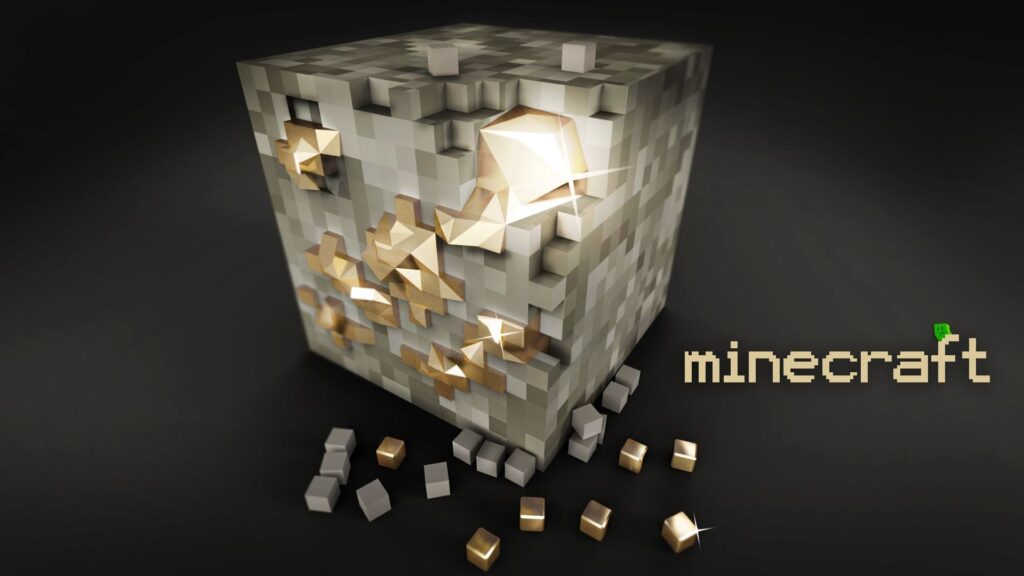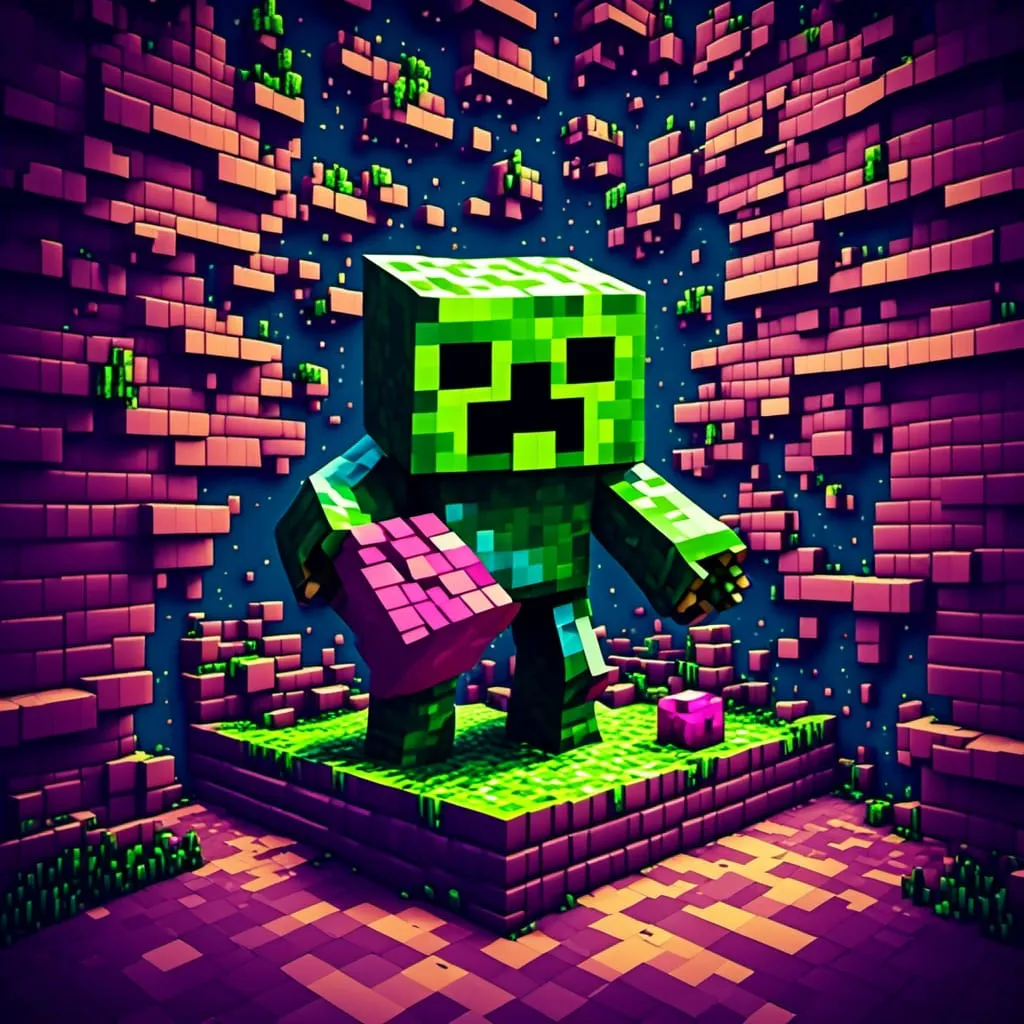

Minecraft – The Game That Redefined Gaming and Inspired a Generation
When Minecraft first appeared in 2009, no one could have predicted the colossal impact it would have on gaming and pop culture. What began as a modest indie project by Markus “Notch” Persson gradually grew into the best-selling video game of all time, surpassing 300 million copies sold across multiple platforms. But Minecraft’s significance isn’t just measured in numbers. It has transcended the realm of simple entertainment, becoming a creative platform, an educational tool, and a social hub unlike anything the industry had seen before.
Minecraft is more than just a video game—it is a sandbox for imagination that has shaped the way people interact with virtual environments, fostering creativity, collaboration, and innovation in both players and developers. Its legacy is felt across gaming, education, architecture, engineering, and even mental health. The simplicity of its blocky, pixelated world disguises a depth that has redefined what a game can be and what it can offer.
The Rise of the Sandbox – How Minecraft Broke the Rules
Prior to Minecraft’s release, most video games followed a structured design philosophy. There were objectives, missions, and clear paths to completion. Games were built around progression, storytelling, and win conditions. Minecraft threw all of that out the window. Instead of guiding players through a linear experience, the game offered no story, no concrete goals, and no real ending.
Players were dropped into a randomly generated world made up of nothing but blocks. Their only initial directive was to survive the night, when dangerous creatures roamed. Beyond that, the world was a blank slate, ready for players to shape as they saw fit. This lack of narrative structure became one of Minecraft’s most compelling features. For the first time, players weren’t following a story—they were writing their own.
The freedom Minecraft offered felt revolutionary. Players could craft, build, explore, and create without restrictions. If someone wanted to construct a simple cottage by the sea, they could. If someone else envisioned a sprawling fortress atop a mountain, the game gave them the tools to make it happen. Minecraft turned the player into the architect, explorer, and storyteller all at once.
The Power of Creativity – Building Worlds One Block at a Time
At the heart of Minecraft’s appeal lies its ability to unleash creativity. The game’s block-based system is straightforward enough for children to grasp, yet complex enough for experienced builders to create intricate, sprawling projects. The blocky aesthetic wasn’t just charming—it made the process of construction and design intuitive and accessible.
Minecraft became a digital LEGO set with infinite pieces. The joy of stacking blocks and watching a structure take shape scratched the same creative itch as physical toys, but with the added bonus of boundless space and limitless materials. Players found themselves recreating everything from fantasy castles to modern skyscrapers, driven by the desire to shape their surroundings exactly the way they imagined them.
The absence of limitations was crucial. Minecraft didn’t demand perfection, nor did it penalize failure. Experimentation was part of the process. This open-ended design created a perfect storm of creativity that encouraged millions to pick up the game and lose themselves in the act of building.
The Thrill of Discovery – An Ever-Changing Landscape
Minecraft’s worlds are procedurally generated, which means no two players experience the exact same landscape. This randomness fuels the desire to explore. Every cave, mountain, and forest feels like a unique discovery, and there’s an undeniable thrill in uncovering hidden villages, underground strongholds, or ocean temples.
The sense of wonder that comes with exploration taps into a primal curiosity. Players aren’t just building; they are adventurers, navigating vast, unknown worlds. The infinite nature of Minecraft’s environments creates a constant drive to keep exploring, making every new playthrough feel fresh and exciting.
The Modding Scene – Minecraft as a Platform for Innovation
Minecraft’s genius doesn’t end with its core gameplay. One of the most transformative aspects of the game is its modding community. Unlike many games, Minecraft fully embraced modding, allowing players to alter and expand the experience through custom content.
The result was an explosion of user-generated modifications, transforming Minecraft into a platform that could become almost anything. Players introduced new biomes, creatures, magic systems, and even entirely new gameplay mechanics. Minecraft became the canvas for fantasy RPGs, space exploration games, and survival horror experiences, all thanks to the ingenuity of its community.
Some of the most popular mods have added immense layers of complexity, such as automation, factory-building, and farming simulators. Through modding, Minecraft continually reinvents itself, keeping the experience fresh for veterans and newcomers alike.
Redstone – Where Engineering Meets Gaming
Among Minecraft’s most impressive features is Redstone, the in-game material that mimics electrical wiring. Redstone allows players to create circuits, machines, and even functioning computers entirely within the game.
The introduction of Redstone transformed Minecraft into a gateway to engineering and problem-solving. Players began crafting complex contraptions like automatic farms, roller coasters, and hidden doors, using Redstone logic to bring their creations to life. The community pushed the limits of what was possible, constructing working CPUs, hard drives, and calculators inside Minecraft’s blocky world.
Redstone’s appeal goes beyond entertainment. It has become an educational tool, teaching players the basics of circuitry, logic gates, and automation in an environment that feels more like play than work.
Minecraft in the Real World – How a Game Became a Tool for Change
Minecraft’s reach extends far beyond the realm of gaming. In 2016, Microsoft launched Minecraft: Education Edition, a classroom-focused version of the game used to teach subjects such as math, coding, history, and architecture. Schools around the world adopted Minecraft as a way to engage students, fostering collaboration, problem-solving, and critical thinking.
Architects and urban planners also saw the potential. Real-world organizations like the United Nations-backed Block by Block initiative used Minecraft to redesign urban spaces, involving local communities in reshaping their environments.
In the mental health space, Minecraft has been recognized for its therapeutic qualities. The simple act of building and exploring offers a calming, meditative experience, providing a low-stress escape for those dealing with anxiety or depression.
The Community – Minecraft as a Social Experience
Minecraft isn’t just a single-player adventure. Multiplayer servers have turned it into a global social platform, where communities thrive and collective projects take on new dimensions. Players band together to build entire cities, roleplay in fantasy worlds, or recreate pop culture landmarks.
Massive servers, like Hypixel and Hermitcraft, have grown into digital ecosystems where players form economies, host events, and develop intricate societies.
Minecraft’s Legacy – A Cultural Phenomenon That Continues to Grow
Minecraft’s influence is undeniable. It sparked a renaissance of creativity, inspiring countless other games to adopt sandbox elements. Its success proved that players don’t always need objectives—sometimes, they just need a space to create.
Even after more than a decade, Minecraft continues to evolve, with updates expanding its possibilities. Its legacy is felt across education, technology, and the gaming world, reminding us that sometimes the most powerful experiences come from placing one block at a time.
